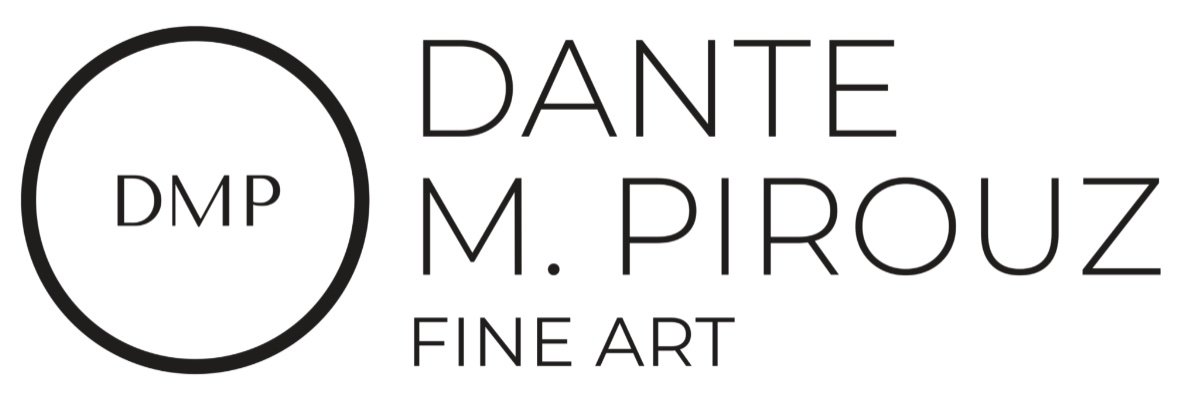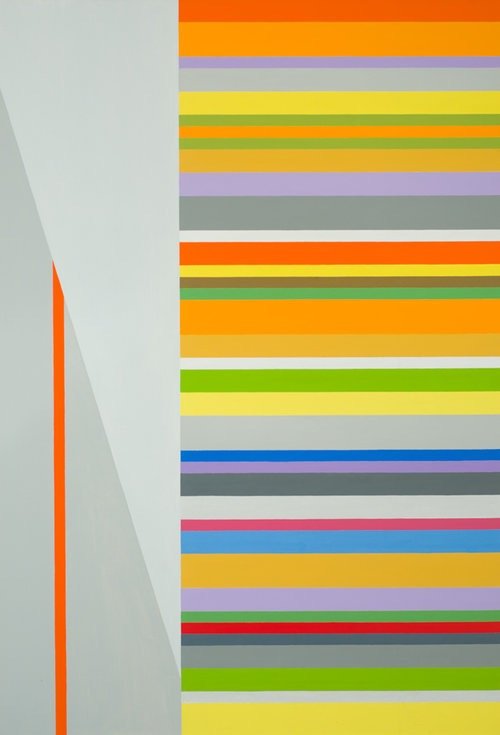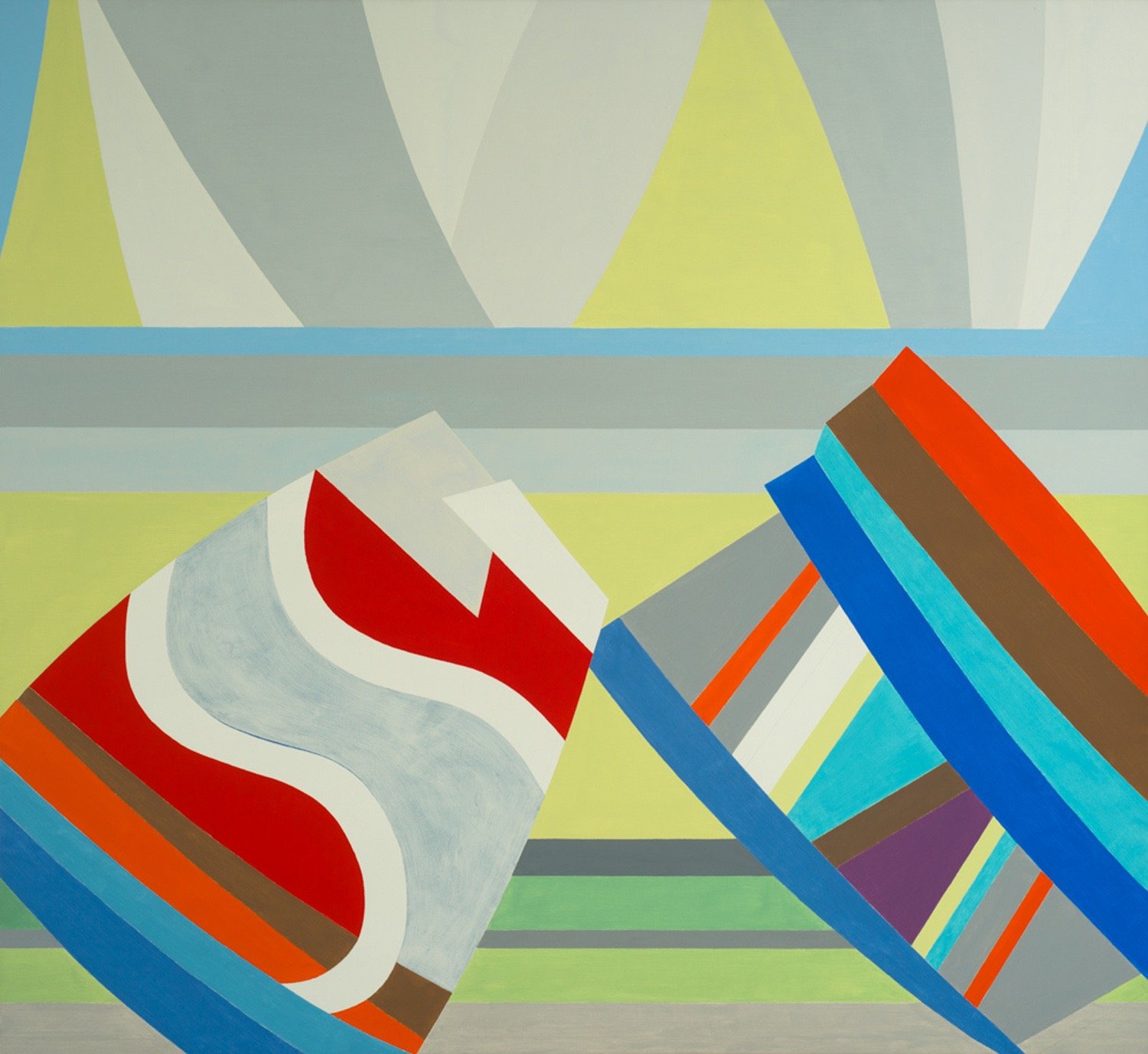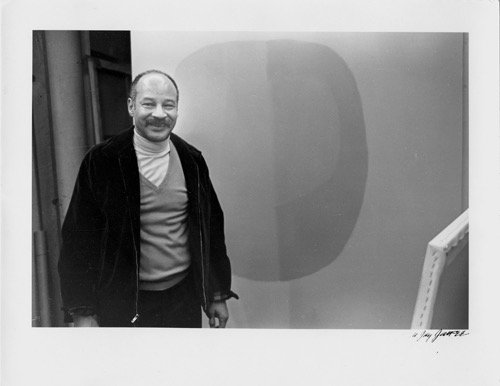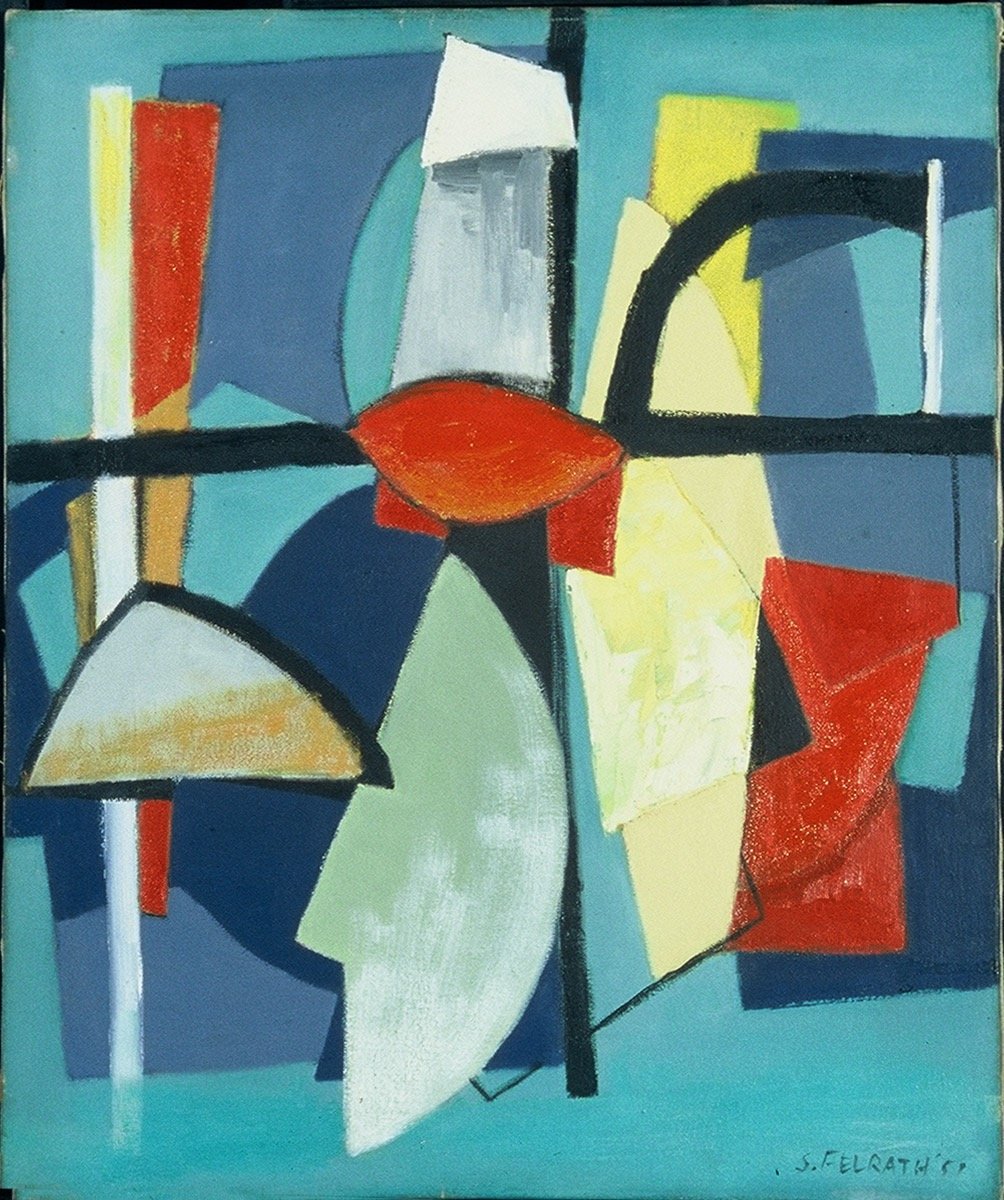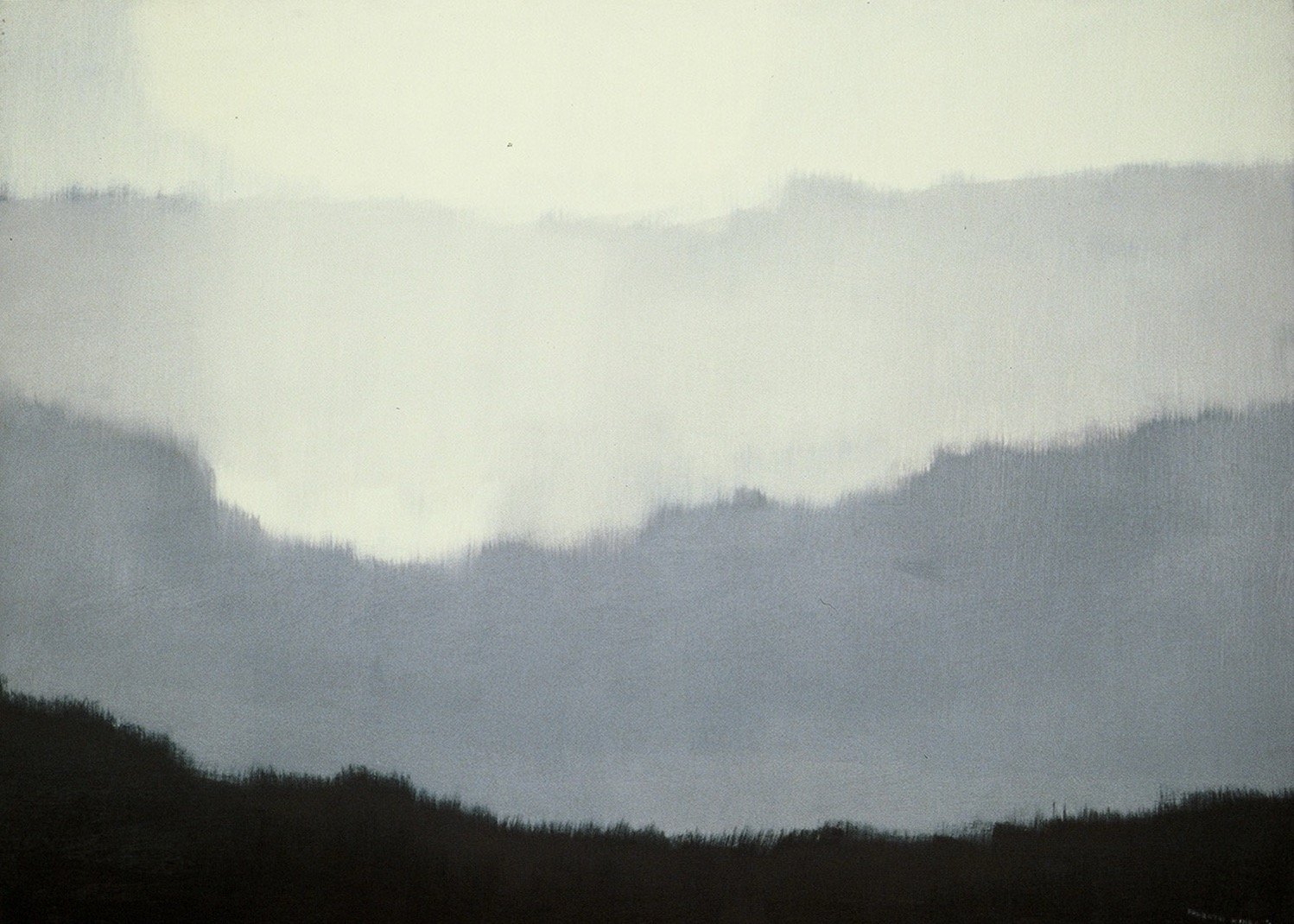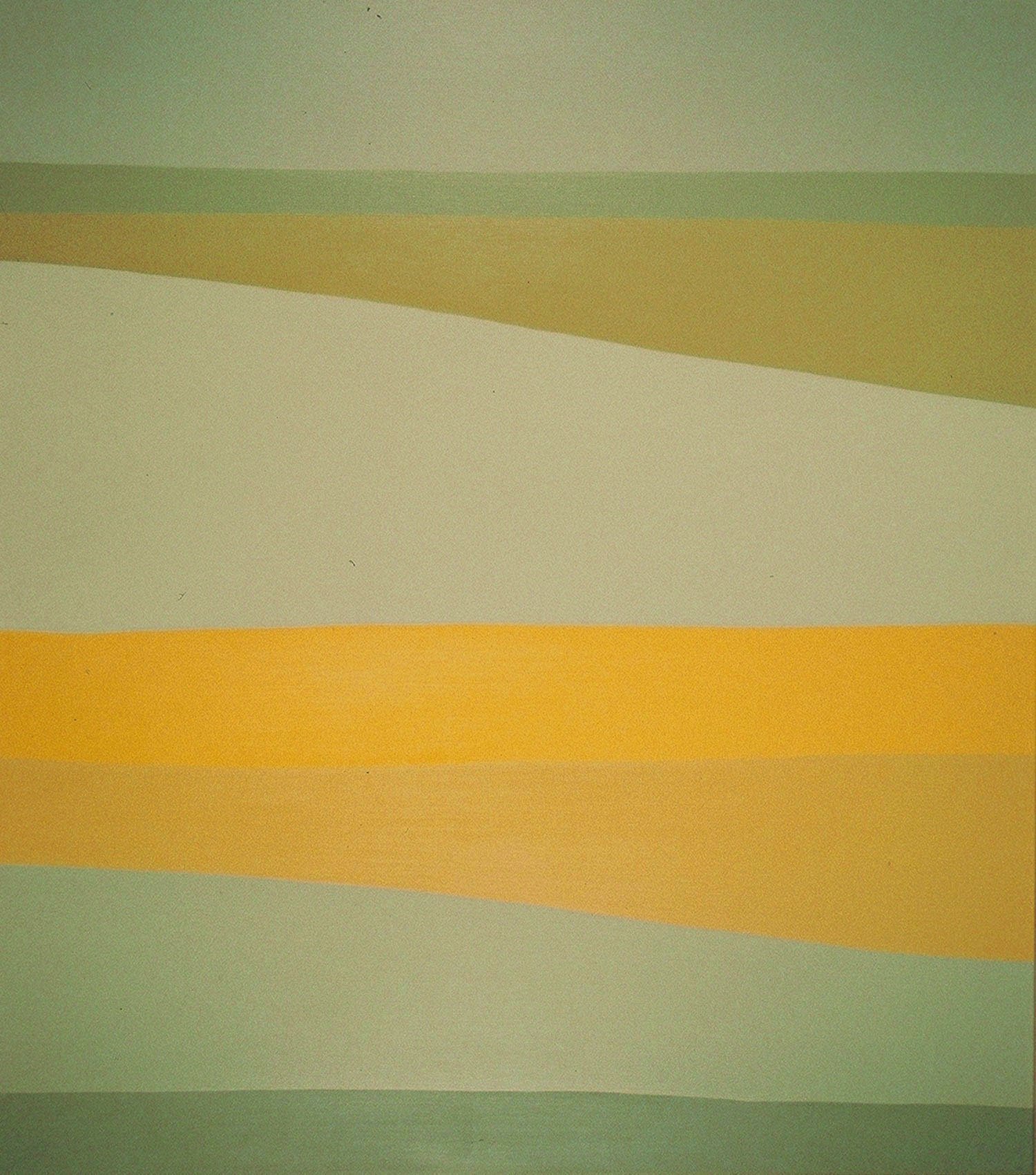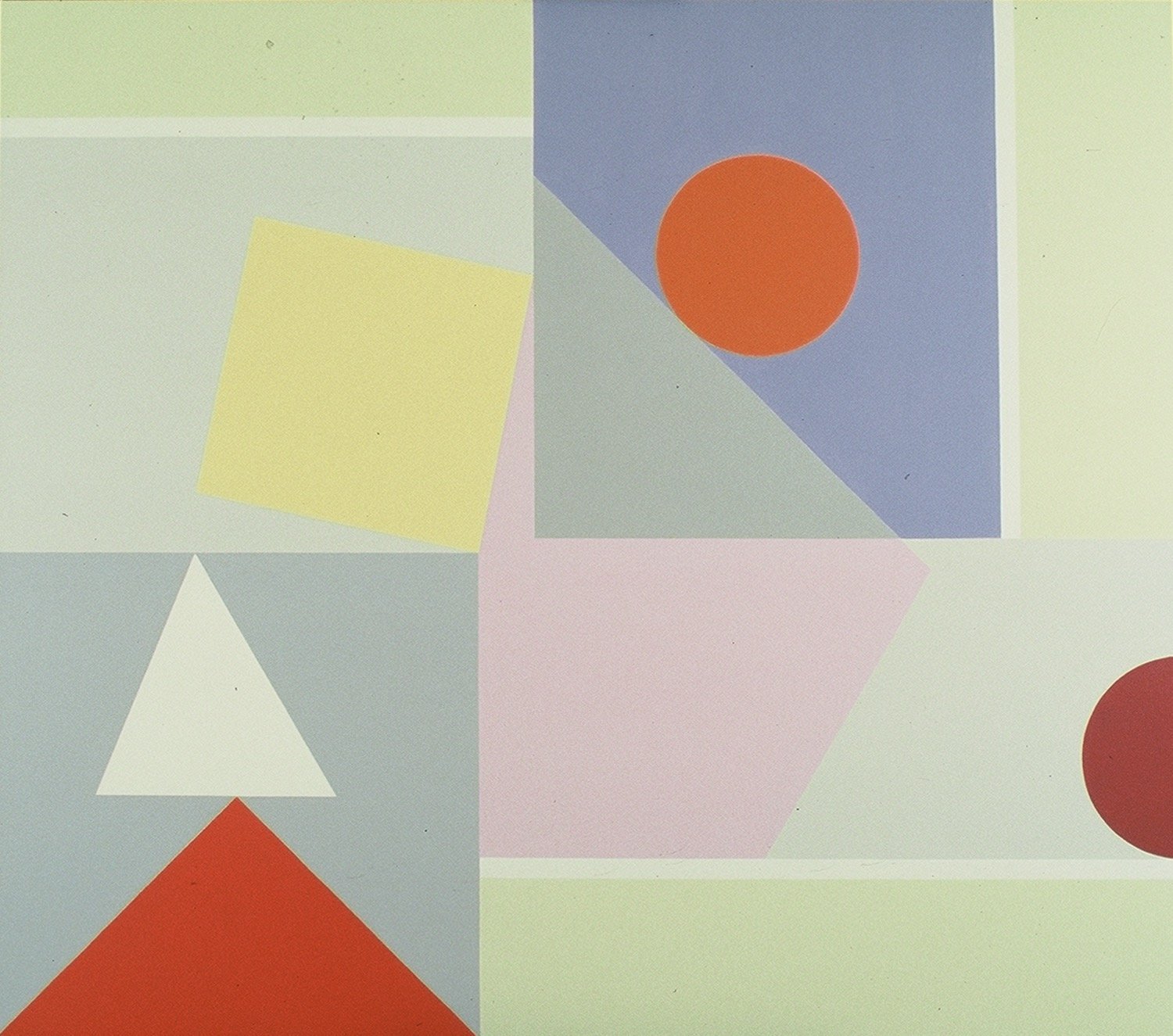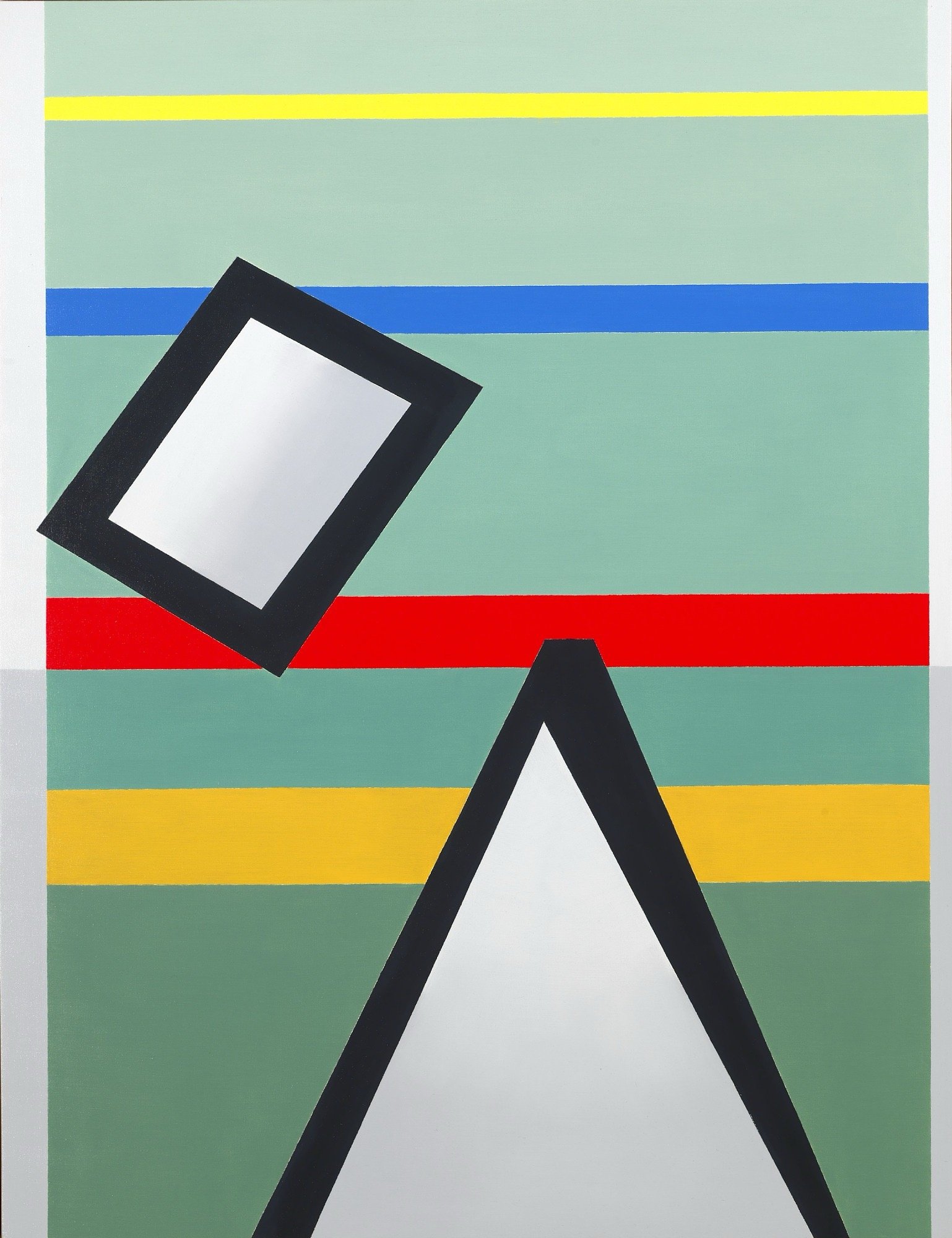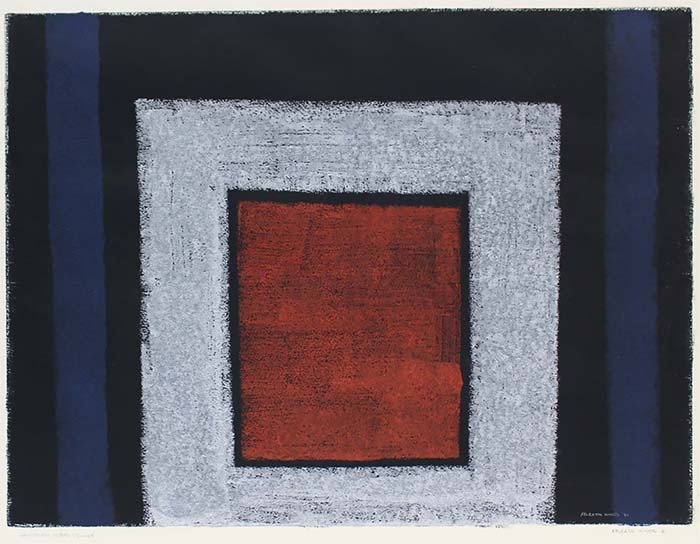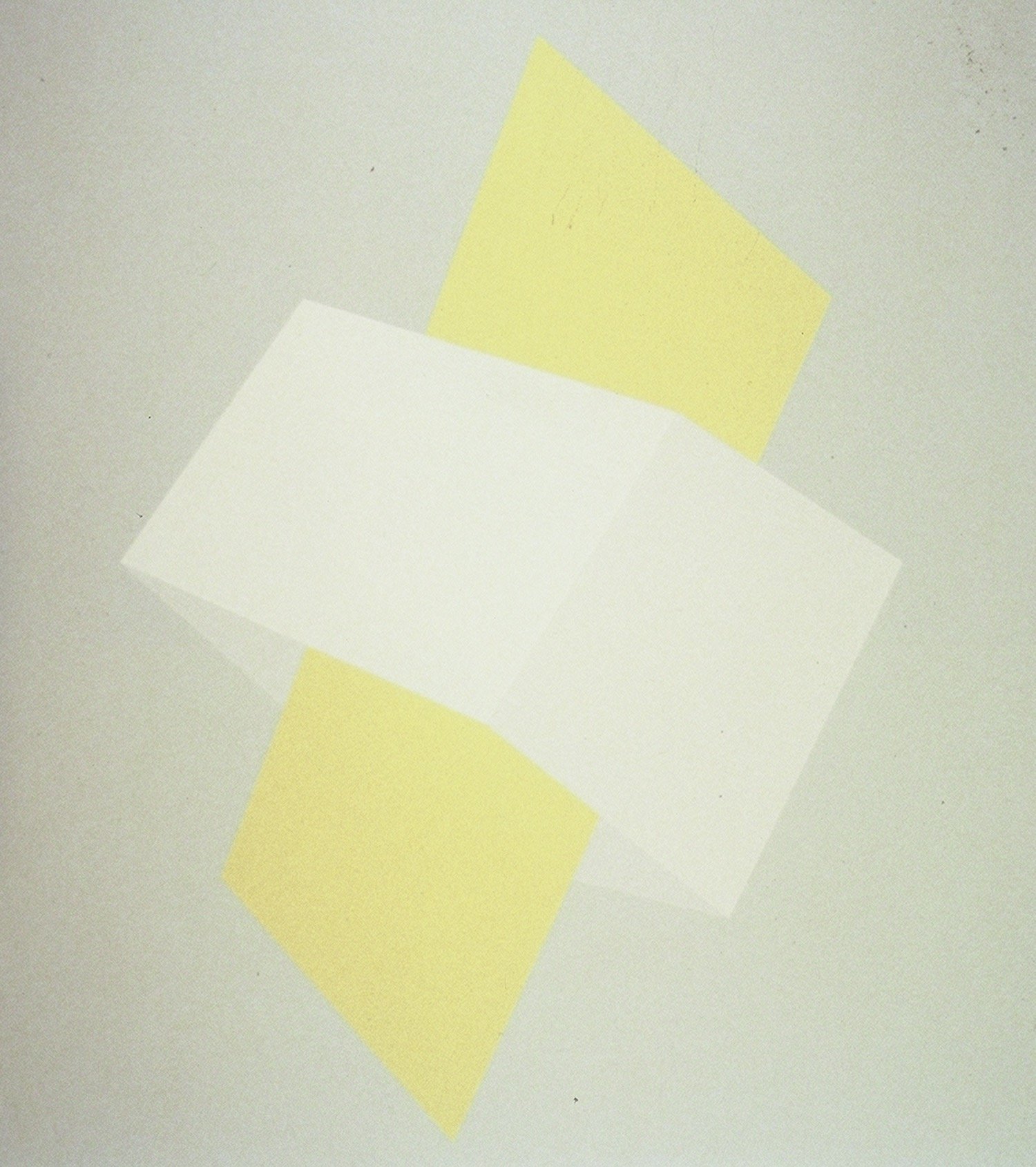Artist to Know: Felrath Hines - Power in Geometry
I often wonder, as I struggle to create during what feels like an overbooked life, how artists I admire and who have created an impressive body of work over thier lifetimes, manage to fit in creating with all of the other distractions in life like paying bills, making ends meet, dealing with life's everyday seeming calamities and chaos.
For artist Felrath Hines, his life story reveals how he also searched for the space in his life to devote to his artistic work that eventually resolved itself in what I think is an interesting way.
Images: It's about Time (1991) 64 x 44 in., Private Collection; Mahler (Unfinished) (1992) 58 x 64 in., Private Collection.
Samuel Felrath Hines Jr. was both an artist and a skilled art conservator which allowed him to open his own art conservation studio and work with clients such as Whitney Museum, the Guggenheim Museum, Hirshhorn Museum and Sculpture Garden, and MOMA and while carving out time over his long life to devote to creating his own distinctive art style.
Felrath Hines (Photograph copyright: The N. Jay Jaffee Trust)
Hines' family moved during the Northern Migration from the South to Indianapolis, Indiana where Hines was born in 1913. He attended youth art classes at John Herron Art Institute. Hines' first job out of high school in 1931 was with the Civilian Conservation Corps where he worked as a fire fighter in the western US and took correspondence school art courses. During the 1940s, Hines worked as a railroad dining car waiter in order to save money to attend the Art Institute of Chicago from 1944 to 1946. Hines later moved to New York and studies at Pratt Institute and New York University and studied privately between 1947 and 1948 with Russian modernist Nahum Tschacbasov.
Hines’ work during the 1940s: Still Life (1948) 36 x 24 in., The Estate of Felrath Hines; Two Heads (1947) 30 x 24 in., Collection of Muskegon Museum of Art
After meeting artist Romare Bearden, Hines joined the influential black art collective Spiral in 1963 with fellow artists Alma Thomas, Charles Alston, Merton Simpson, and Hale Woodruff.
Hines’ work during the 1950s: Abstract (1951) 24 x 20 in., Collection of Muskegon Museum of Art; Pond (1958) 36 x 24 in., The Estate of Felrath Hines; Image (1958) 26 x 24 in., Collection of David C. Driskell Center; Essence of Spring (1954) oil on canvas, 30 x 24 in., Converse University, Spartanburg, South Carolina.
In 1951, Hines took an opportunity to work for master framer Robert M. Kulicke, intitally for no pay. The position gave Hines access to key contacts in the world of New York art and art conservation which were pivotal in building his career as a conservator and artist. A two year apprenticeship with Caroline and Sheldon Keck, founders of the Institute of Fine Arts Conservation Center at NYU, where he assisted in the conservation of Claude Monet’s Water Lilies exhibited at MOMA.
Hines’ work during the 1960s: Ochre & Green with Yellow Green Circle (1969) 46 x 40 in., Collection of Peabody Essex Museum; Shadow (1969) 33 x 35 in., Collection of North Carolina Central University Art Museum; Landscape (1965) 38 x 52 in., The Estate of Felrath Hines; Wave #2 (1963) 70 x 70 inches, The Estate of Felrath Hines.
Hines built a 25 year career as a master conservator, working as a supervisor at NYU’s Fine Arts Laboratories from 1962–1964 after which he launched his own private conservation studio. During this period Hines experimented with graphical shapes, color block landscapes and abstract works.
Untitled (1963) oil on canvas, 77 1/8 x 40 1/8 in., One Morgan Square, Spartanburg, South Carolina
“In my view, an artist’s work is to rearrange everyday phenomena so as to enlarge our perception of who we are and what goes on about us.”
Hines’ work during the 1970s: Yellow and Gray (1976) oil on linen, 54 1⁄4 x 48 in. (137.7x 122.0 cm), Smithsonian American Art Museum, Gift of the Barbara Fiedler Gallery, 1978.128; Raw Umber & Cobalt/Crossroads (1978) 54 x 48 in., Collection of Ackland Museum; Dream World (1976) 54 x 48 inches, Collection of Eskenazi Museum of Art, Indiana University; Western Landscape/Red & Ochre (1979) 60 x 48 in., Private Collection.
In the 1970s, Hines’ work began to take on a signature quality that focused on graphical shapes and colors that reflect abstract concepts that carried through for the rest of his art career.
In terms of his working life, in 1972, at the behest of his friend and long time customer Georgia O'Keefe, Hines moved from NYC to Washington DC to take over as the Chief Conservator of the National Portrait Gallery at the Smithsonian Institution after which he moved to the Hirshhorn Museum and Sculpture Garden, finally retiring in 1984.
Hines’ work during the 1980s: Opening (1987) 36 x 28 in., Private Collection; Balance (1989) 52 x 58 in., Collection of Detroit Institute of Arts; Escape (1989) 58 x 52 in., Collection of Ackland Museum; Radiant (1983) oil on linen, 72 x 96 in. (182.9 x 243.8 cm), Smithsonian American Art Museum, Gift of Dorothy C. Fisher, wife of the artist, 2011.46, © 1983, Dorothy C. Fisher.
Red Stripe with Green Background (1986) oil on linen, 52 x 40 in., Collection of Smithsonian American Art Museum; Untitled with Red Square (1981) oil and monotype on wove paper, 22 1/4 x 30 in., Two Morgan Square, Spartanburg, South Carolina.
Once Hines retired in 1984, he began the most prolific period of creative production of his long life. Hines produced more pieces in this 8 year period until his death in 1992 than he had produced over his entire life and his work during this period continued to show a marked evolution in color vibrancy and complexity from the geometric style he had developed as early as the 1970s.
Hines’ work during the 1990s: Open End (1990) 52 x 58 in., Private Collection; Aquatic Adventures (1993) 46 x 52 in., Collection of Ackland Museum; Lover's Knot (1990) 58 x 52 in., Collection of Fort Wayne Museum of Art; Midnight Garden (1991) 52 x 58 in., Collection of David C. Driskell Center.
Felrath Hines’ work is in the collections at the Smithsonian American Art Museum, the Chrysler Museum of Art, the Fort Wayne Museum of Art, the Ackland Art Museum at the University of North Carolina at Chapel Hill, and the Detroit Institute of Arts, among others.
